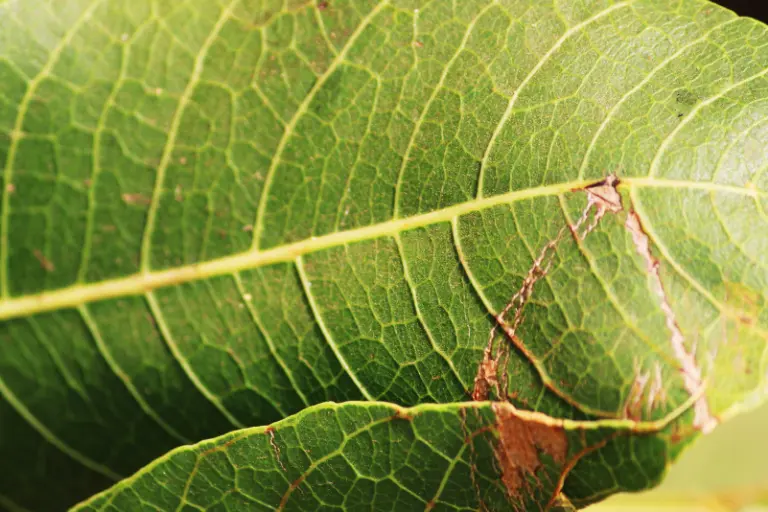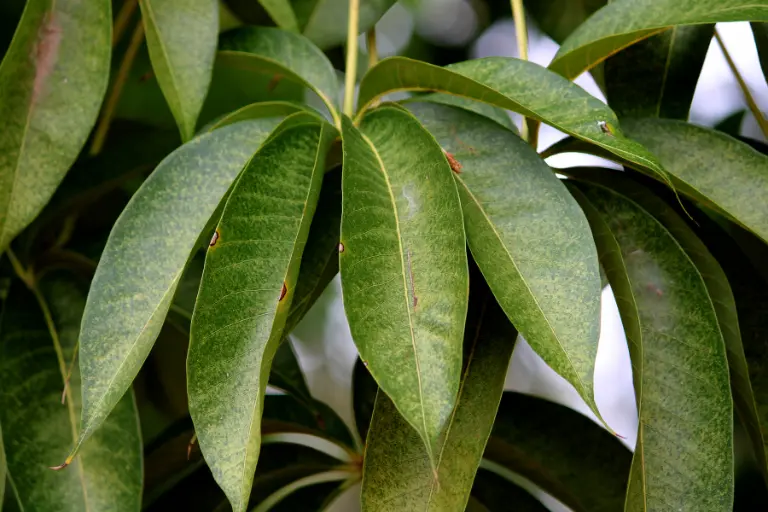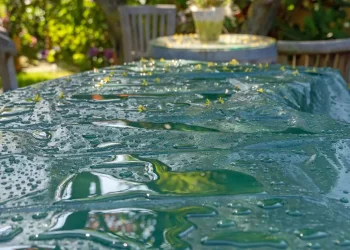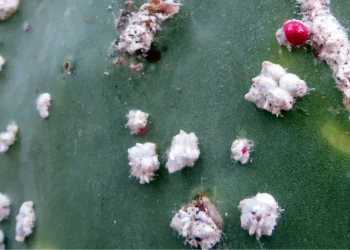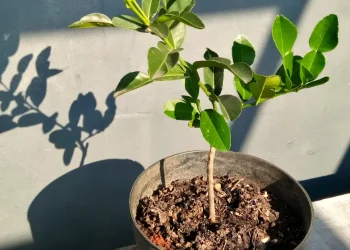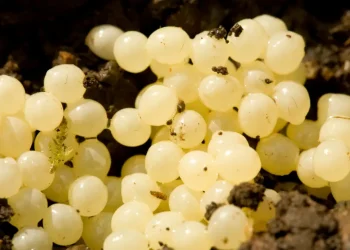Growing trees like mango is, at least where I come from, very rare. When they become mature, they will grow very tall with huge foliage that provides a place to shelter from the sun and a place to relax. We are talking up to 131 feet (40 meters) tall and with a crown radius of 50 feet (15 meters).
But growing them to that point can be very challenging, and one of many problems can manifest itself as mango leaves turning yellow.
Unfortunately, this is not natural as mango trees are deciduous, meaning they do not shed their leaves. Some leaves can fall and be replaced with new ones. However, if you see half of the foliage turning yellow, it can signal different issues, starting from overwatering and underwatering to nutrient deficiency or pest infestation.
In this article, we’ll explore the top causes of yellow leaves on mango trees, and I’ll tell you how to solve each one to give your mango that vibrant green color back.
Why do Mango Leaves Turn Yellow?
On almost every plant, the leaves are the most delicate part that first shows any distress. This is no different for mango trees, and before you notice problems on the trunk or roots, the leaves may start to turn yellow or fall off completely. Here are the top cases of yellow mango leaves.
Overwatering
One of the key culprits behind the yellowing of mango leaves is overwatering. While providing your mango tree with adequate hydration is essential, excessive watering can lead to unintended consequences.
When the roots of the tree are constantly submerged in waterlogged soil, they struggle to absorb oxygen, resulting in reduced nutrient uptake. And rest of the nutrients is usually washed off the soil. This stress on the roots affects the overall health of the tree, causing its leaves to turn yellow.
Overwatering can also promote the growth of harmful microorganisms in the soil, further compounding the problem. In addition to the yellowing leaves, you might notice signs such as wilting, mold growth, and even root rot.
A fruit-bearing mango tree requires up to 120 liters (32 gallons) of water per day. However, indoor mango obviously needs a lot less. Mangoes growing in a pot come with one undeniable advantage – you can check the moisture of the soil with your finger. If the soil is still excessively wet, wait another day or two before checking again and watering.
Underwatering
While too much water can cause mango leaves to turn yellow, the opposite issue – underwatering – can have a similar effect. Insufficient water supply affects the tree’s ability to carry out vital processes, such as nutrient absorption and photosynthesis. As a result, the leaves may become stressed and change color as a visible sign of distress.
It’s a lot more common for gardeners to overwater their mangoes than underwater. An adult tree will hold and store a lot of water inside roots, branches, and trunk and reach for it when needed. But when these storages are full, the tree won’t take any more water from the soil, which and easily become clumped.
Regularly monitor the quality of the soil. If the soil is excessively wet or too dry before individual watering, adjust your schedule. Remember that consistency is key when adjusting your watering routine. It might take a few weeks for your mango tree to respond to the changes. If the leaves start to regain their healthy green color, you’re on the right track.
Nutrient Deficiencies
The health and color of your mango tree’s leaves are closely tied to the nutrients it receives from the soil. When essential elements like nitrogen, iron, and magnesium are lacking, the leaves can turn yellow as a visual indicator of the tree’s struggle.
The exact nutrient that is missing in the soil can be hard to address. Here is a list of common signs of different deficiencies. For a more precise approach, I recommend getting a soil testing kit at any gardening center. They are relatively cheap and will check all the most crucial nutrient amounts in the soil at once.
- Nitrogen Deficiency: Nitrogen is crucial for leaf and stem growth. A nitrogen deficiency often results in older leaves turning pale yellow while the veins remain green.
- Iron Deficiency: Insufficient iron can lead to leaves turning yellow while the veins get dark green – a condition known as interveinal chlorosis.
- Magnesium Deficiency: Magnesium is essential for photosynthesis. A magnesium deficiency causes leaves to turn yellow between the veins, eventually progressing to a reddish or purple color.
- Potassium Deficiency: Potassium is vital for overall plant health. Symptoms of deficiency include yellowing or browning leaf edges, often starting with older leaves.
- Phosphorus Deficiency: Phosphorus aids in root development and flower formation. Leaves with a phosphorus deficiency exhibit a dark green color and may appear purplish.
- Zinc Deficiency: Zinc deficiency leads to smaller leaves, distorted growth, and yellowing between leaf veins.
Nutrient deficiencies can arise from various factors. The soil your mango is in can be poor, not having enough of these nutrients. Then it’s important to reach for a balanced fertilizer.
But it can also be caused by a wrong soil pH. Mangoes are very universal and can tolerate a variety of soil types, with the pH ranging from slightly acidic to slightly alkaline (pH between 5.5 to 7.5).
Soil pH limits the availability of certain nutrients. In slightly acidic soils, minerals like iron, manganese, and aluminum are easily accessible to plants, ready to be absorbed. But when we flip the scale and the pH shifts towards the alkaline side, these materials are essentially locked away, and others became more available, like calcium or magnesium.
When the pH of the soil is too much to one side (either too alkaline or too acidic), the plant can’t reach for the essential nutrients, which, however, are present in the soil. And as a response to that, your mango tree leaves can turn yellow. There’s no other way to see if pH is the culprit than getting a testing kit.
Not Enough Sunlight
Just as humans need sunlight for vitality, your mango tree thrives on adequate sunlight to maintain its lush green foliage.
Mango trees are tropical plants that require full sun to thrive. When deprived of sunlight, they may not be able to carry out photosynthesis effectively, leading to a lack of chlorophyll production and subsequent yellowing. This issue often affects leaves in the lower canopy, where sunlight penetration is limited.
Choose the right location to plant your mango. A place where the tree can receive full sun for at least 6 to 8 hours a day. Make sure it’s not shaded by nearby buildings or large trees. Don’t forget to regularly prune and shape the tree to maintain an open canopy structure that allows sunlight to reach all parts of the tree.
One great technique to get sunlight to the lower parts of the tree is to place reflective surfaces, such as white mulch, reflective film, or even mirrors, around the base of the tree. These surfaces can bounce additional sunlight onto the lower parts of the tree.
If you grow mango in a container, make sure to rotate it every 2-3 days to ensure all sides of the plant receive equal sunlight exposure.
Pest Infestation and Diseases
The beauty of your mango tree’s leaves can be marred by the unwelcome presence of pests and diseases. Infestations by insects like aphids, spider mites, and mealybugs, as well as the onslaught of various diseases, can lead to the yellowing of leaves. Pests suck vital nutrients from the leaves, causing them to weaken and change color as a sign of distress.
Diseases, on the other hand, interfere with the tree’s physiological processes, leading to similar symptoms. One common disease is verticillium wilt, caused by a soil fungus. It causes branches to will unexpectedly, and before that, the leaves will usually turn yellow. This disease is very hard to diagnose as it is usually only observable as discoloration in the recent annual rings.
In this case, I wouldn’t be afraid to fastly reach for insecticide. You want to stop it as fast as possible before it attacks the rest of your garden.
Transplant Shock
Moving your mango tree to a new location, whether from a nursery to your garden or from one spot to another, can subject it to transplant shock.
Transplant shock occurs when the tree’s roots are disturbed during the transplantation process, affecting its ability to absorb water and nutrients. The stress of the move can cause the leaves to turn yellow as the tree redirects its resources to establish new roots. This is particularly common during the initial stages of transplantation.
To prevent transplant shock and, thus, yellowing of the mango leaves, make sure to transplant your mango tree during its dormant season, typically in the late fall or early spring. This allows the tree to focus its energy on root establishment rather than foliage or fruit growth.
Ensure the new planting site has well-draining soil and receives adequate sunlight. Prepare a hole that is just slightly bigger than the previous planting spot. During the transplanting, handle the roots with care to avoid damage. Once you plant it in its new place, don’t forget to hydrate the tree thoroughly.
Can Yellow Mango Leaves Turn Green Again?
It’s generally not possible for yellow leaves to turn green again. But the good news is that yellow mango leaves will soon be replaced with new, lush green leaves.
But, in some cases, mango leaves can indeed regain their green hue with proper care and attention. However, the ability to restore their color depends on the underlying cause of the yellowing. If the issue is related to nutrient deficiency, after the plant gets all the nutrients and minerals it needs, the leaves may come back green.
But yellow leaves caused by overwatering and underwatering or inadequate sunlight can’t be reversed. In case of water issues, the leaves are likely already partially dead and will wilt soon. In the second case, the leaf has lost its chlorophyll, which can’t be restored.
Conclusion
The most common causes for mango tree leaves turning yellow include overwatering and underwatering, nutrient deficiency, pest infestation, diseases, transplant shock, or your tree may not be getting enough sunlight.
By recognizing the signs of each cause, you can diagnose the problem fast enough and restore your mango tree’s health. Although, you won’t be able to restore its fully green foliage.
Happy gardening!


